Chapter 14- Circuits
Capacitance
A capacitor is a device that can store energy in an electric field
It is a little like a battery, but only stores, does not ‘produce’ electrons. Also, a capacitor can ‘dump’ it’s charge very quickly, whereas a battery takes a while

Can consist of 2 conductors of any shape placed near each other without touching
The region between them is commonly filled with an electrically insulating material called a dielectric which will increase the electric field
The material will dictate what the capacitor will be used for

The charge collects on the metallic plates, and
one becomes positively charged (loses e-)
one becomes negatively charged (gains e-)
Molecules in the dielectric material become polarized
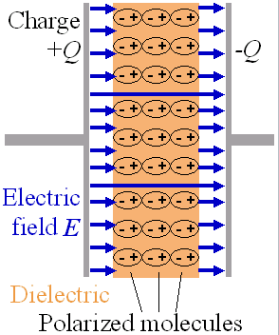
Image the capacitor as a water tower hooked to a pipe. The water tower ‘stores’ water pressure—when the water system pumps produce more water than a town needs, the excess is stored in the tower. Then, at times of high demand, the excess water flows out of the tower to keep pressure up. A capacitor stores electrons in the same way and can release them later
The equation depends on the area of the two plates, the composition of the dielectric, and the distance between the two plates
C = kεoA / d = εA / d
ε is the permitivity of the dielectric (insulating) material and is made up of k times εo where k is the relative permitivity and εo is 8.854×10-12 F/m
k = 1 unless told otherwise!
The amount of charge is related to the potential difference; this ratio is the capacitance
Q = CV or C = Q / V
where Q is the charge (in Coulombs, C)
where V is the voltage (in Volts, V)
where C is the capacitance (in Farads, f)
1 farad = 1 Coulomb / Volt
many times the μF is used (microfarad) - x 10-6
Because the capacitor stores charge, it also stores electrical energy
The battery does ‘work’ transferring charge across the plates
E = ½CV2 or E= ½QV
Circuits are diagrams that show us the wiring, power source, and whatever else might be connected by the wire
They show us the pathway for electrons to travel
For continuous flow, circuit must be complete with no gaps
There are plenty of things that can be in a circuit
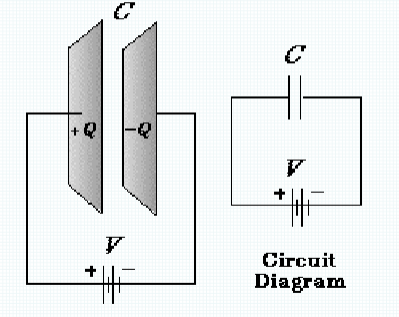
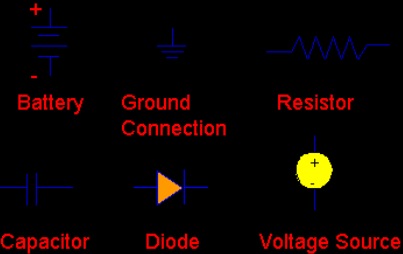
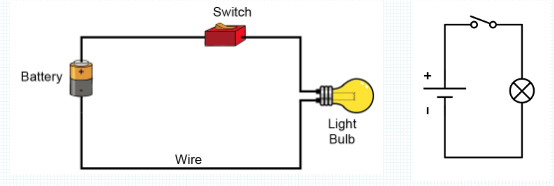
Electrons flow into (+) or out of (-) the battery
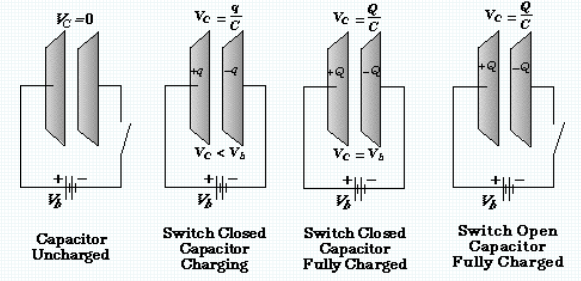
Capacitors can be in series or in parallel wiring of a circuit

A single pathway for electron flow between terminals of a battery, generator, etc.
Any break will stop the flow
Since there is only one way for the charge to flow, the charge is the same everywhere
Voltage is kind of like the push to get it to go (like a toll booth)
Capacitors in series all have the same charge; the total voltage is the sum of the voltages across each capacitor
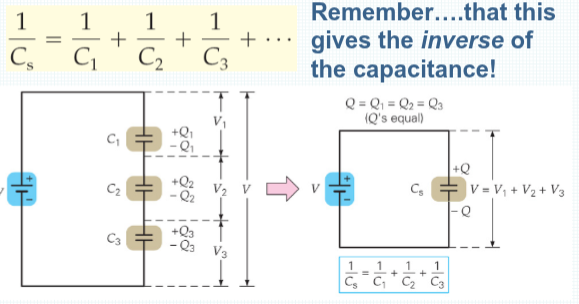
In parallel wiring, branches are formed, each of which is a separate path for the flow of electrons
Electrons will only travel through one way (1 branch), so charge is divided
Each branch is independent of another, so a break in one does not interrupt total flow
Capacitors in parallel all have the same potential difference; the total charge


We can picture capacitors in parallel as forming one capacitor with a larger area
